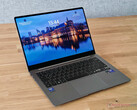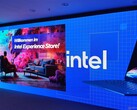Intel has announced plans to collaborate with Chinese panel manufacturer BOE to develop a range of display technologies designed to reduce power consumption and so extend laptop battery life. These energy-saving methods are not entirely new, as at least two of them are already utilized in smartphones such as the Apple iPhone 17.
Above all, Intel and BOE aim to reduce the frame rate of a laptop display to just 1 Hz when displaying static content such as images or text – a plan the two companies unveiled over a year ago. Now, the launch is drawing nearer, with the first laptops featuring OLED and IPS panels capable of reducing the refresh rate to 1 Hz expected to ship as early as 2026.
Current laptop displays are typically operated at a fixed frame rate, such as 60 Hz or 120 Hz. However, Intel's Multi-Frequency Display (MFD) technology allows the display to be adjusted to the content being displayed. For example if a movie runs at 24 frames per second, the display's frame rate can be reduced to 24 Hz, which not only prevents image tearing but also reduces power consumption. Such technology would also make it possible, for instance, to automatically limit the screen of a gaming laptop to 60 Hz when not playing games.
Lastly, Intel has announced a technology called SmartPower HDR, which is designed to significantly reduce power consumption, especially when viewing HDR content at low screen brightness, by intelligently adjusting the display's power supply voltage. However, this technology is currently only available for OLED panels.



















